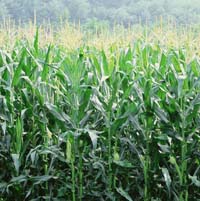Crop Rotation Economics Can Be Confusing
Crop Rotation Economics Can Be Confusing

As more farmers consider corn-after-corn rather than more traditional corn-soybean crop rotations, there is no easy way to determine which is the best economic practice for their operation.
Farmers must consider their situation separately from their neighbors weighing their land resources, labor, capital and management skills in deciding what is best for them, said Craig Gibson, a farm management specialist with the University of Kentucky College of Agriculture.
“I don’t know which way I’d go,” he said. “The high-return farms in the Kentucky Farm Management Program, based on history, always had more corn and better corn yields as compared to soybeans. However, in today’s environment of higher energy, if farms don’t realize at least as much in (U.S. Department of Agriculture) loan deficiency payments as they have in the past six years, they will be better off economically with a traditional corn-soybean rotation than the corn-corn-soybean rotation many are now using.”
Land resource is “very, very important” because not all land is equal. While a landlord may think his land is as good as anyone else’s, there is a difference, Gibson said.
“The decision of your cropping system really, really depends on your land resources and the capability of that land,” he said.
There is little difference in projected returns from corn and soybeans when price, loan deficiency payments and production costs, excluding land costs, are considered. These returns are based on the five-year average agronomic analysis data from the Kentucky Farm Business Management Program. It is a “game of inches,” he said.
When land costs are included, soybeans are a better option than corn when a farmer is renting land under a two-thirds, one-third crop share scenario, where the tenant provides all the production costs but has to split the crop with the landowner.
As farmers consider their crop rotation, another factor to look at is the impact soybean rust might have. If rust does become an issue in the state and farmers have to use fungicides in order to control it, the costs for soybean production will increase, Gibson said.
While production problems can result in higher prices for the commodity, he cautioned that an increase in average price will not offset yield reduction. Under this situation, soybean production costs and yields could suffer, perhaps giving an edge to corn.
However, corn production costs are also escalating as the result of energy costs. Natural gas is the primary cost in nitrogen fertilizer. As a result of higher gas prices, nitrogen prices have substantially increased.
Gibson said there are too many unknowns – rust, fertilizer costs, etc. – to say what kind of a cropping system is best suited to Kentucky farms. Instead, producers must know what is right for them based on labor, land resources, capital and their management skills. The economics of crop rotation is as individual as the farmers who are making the decisions.
